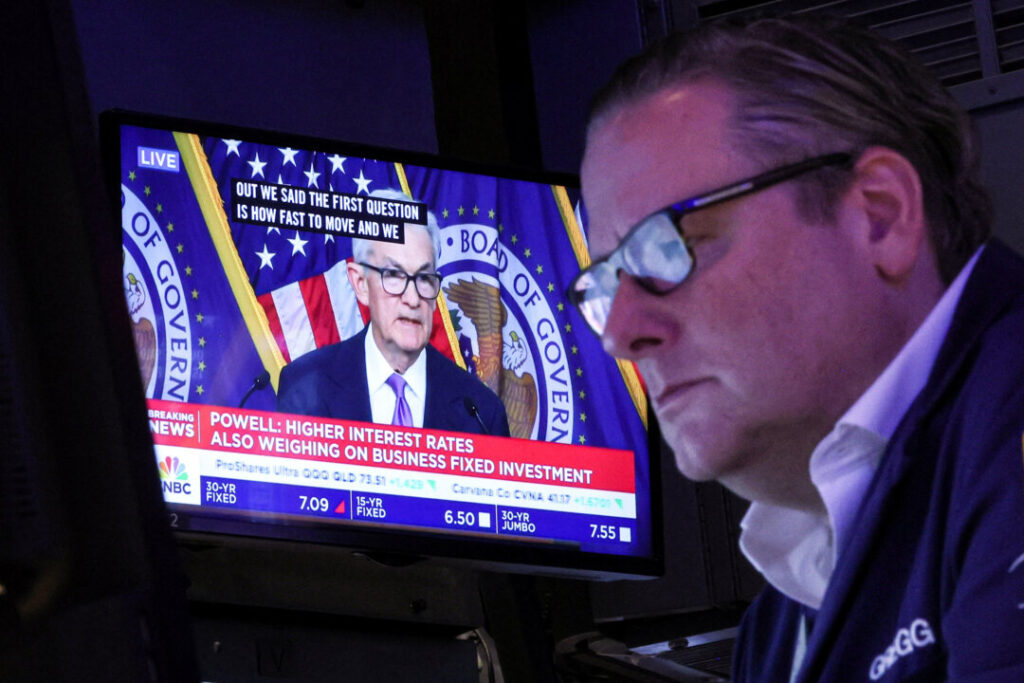The Nasdaq Composite Index tumbled 0. 56 percent to 15,011. 35.
The tech-heavy index still scored a weekly boost of 0. 12 percent and a monthly jump of nearly 5 percent. The big story for the Nasdaq was the enormous 43.
42 percent annual surge. The S&P 500 Index dipped 0. 28 percent to 4,769.
83 to close out 2023. Like its index counterparts, the S&P 500 enjoyed a 0. 32 percent weekly climb and a 3.
81 percent rise this month. This year, it soared more than 24 percent. Other assets put together a terrific 2023.
Although they have retreated since hitting a record high, gold prices ended the year above $2,000 on the COMEX division of the New York Mercantile Exchange. The yellow metal posted a weekly boost of 0. 35 percent but suffered a monthly drop of close to 1 percent.
In 2023, gold rallied about 13. 2 percent. Following the crypto winter of 2022, Bitcoin prices rebounded substantially.
The chief cryptocurrency skyrocketed 159 percent to nearly $43,000 per coin. Ethereum, the sister digital currency to Bitcoin, also surged 93 percent to around $2,300. But others failed to maintain the momentum from previous years.
U. S. crude oil prices endured their first yearly loss since 2020, sliding 11.
4 percent to $71. 33 per barrel on the New York Mercantile Exchange. It was a volatile year for the energy commodity, with the West Texas Intermediate (WTI) benchmark trading between $64 and $95.
Bears feasted on natural gas as the so-called bridge fuel collapsed more than 43 percent. Prices extended their losses from late 2022 as record domestic production levels and mild temperatures weighed on natural gas. Instead, stocks exceeded many observers’ expectations, thanks to a significant year-end rally fueled by the Federal Reserve signaling rate cuts in 2024 and 2025.
At the December Federal Open Market Committee (FOMC) policy meeting, the Summary of Economic Projections (SEP) suggested policymakers were penciling in three rate cuts next year, lowering the median benchmark fed funds rate to 4. 6 percent. Additionally, at the post-FOMC meeting press conference, Fed Chair Jerome Powell shifted away from his previous position that it was premature to discuss rate cuts to turning dovish and conveying to everyone that the tightening cycle may be over.
“People are not writing down rate hikes,” Mr. Powell told reporters earlier this month. “That’s us thinking we’ve done enough.
” With rate reductions firmly in view, the debate is now the timing. However, economists assert that it is more likely the central bank will slash rates beginning in the summer. But Goldman Sachs economists predict the Fed to make three consecutive 25-basis-point cuts in March, May, and June.
“They expect this to be followed by quarterly cuts until reaching a terminal rate of 3. 25-3. 5%, 25 basis points lower than previously expected,” the bank said in a note.
Despite the high odds of monetary easing, several Fed officials, including New York Fed chief John Williams, threw curveballs following Mr. Powell’s press conference. “Looking at what happened in the past, the S&P500 typically rises after the first rate cut, but the sustainability of the gains will depend on the underlying economic fundamentals,” Ms.
Ozkardeskaya wrote in an analyst note. “Lower rates are good for the S&P500 valuations EXCEPT when the economy enters recession within the next 12 months. ” Jim Besaw, the founding principal at GenTrust, believes the market is applying a lot of weight on several scenarios: inflation falling, averting a recession, artificial intelligence, lagged effects of higher interest rates not materializing, and geopolitical tensions staying contained.
“We believe inflation is unlikely to come down to the extent the market believes absent a recession, making rate cuts without a recession less likely than the market believes,” Mr. Besaw stated in a research note. “We also believe the odds of a recession are significantly higher than the market believes.
In the long run, AI is a game changer, but the near-term pricing on several AI stocks is reminiscent of 1999. The impact of higher rates has variable and differing lags in different markets. ” Next year could be another broad-based bullish environment for the stock market if the Federal Reserve pivots, corporate earnings perform well, and the economy avoids a recession, notes Jurrien Timmer, the director of global macro for Fidelity Management and Research Company.
The risks could involve renewed inflationary pressures, the central bank walking back rate cut signals, and the soft-landing bursting into flames. .
From: theepochtimes
URL: https://www.theepochtimes.com/business/us-stocks-post-huge-2023-gain-sparked-by-federal-reserve-rate-cut-expectations-5555658
